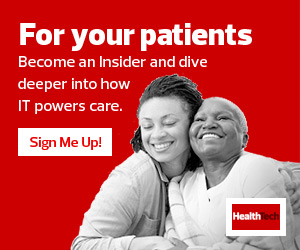Creating Access to Healthcare Through Telemedicine
Older patients, publicly insured patients and patients from lower socioeconomic backgrounds often experience worse outcomes due to barriers to healthcare access. Telemedicine is an effective intervention to reach patients from rural areas and those who live far from a hospital. But the digital divide — a lack of broadband access, digital literacy and experience with technology — keeps many patients from benefiting.
Patients who are publicly insured, from lower income areas and who are older disproportionately use phone-based telemedicine instead of video-based technology. The study we presented at the 2022 American Telemedicine Association Conference focused on what that disparity means in practice. If those patients are happy with their phone-based telemedicine visits, is there a true disparity?
WATCH: University of Miami Health System connects kids with healthcare using mobile clinic.
Our study found that lower satisfaction with outpatient visits was associated with conversion from video to phone visits, a technical failure that happens often. Patients who are historically affected by the digital divide more frequently experience such conversion. This, and subsequent lower satisfaction, both contribute to disparities in access.
Our ongoing qualitative study has interviewed patients about their experiences, and we have corroborated the findings that show high patient satisfaction with video-based telemedicine.
Telemedicine is especially helpful in multidisciplinary settings. Coordination among different care groups is much easier for multidisciplinary tumor boards using telemedicine, particularly for patients with limited care access.
While patients and providers in our qualitative studies have shown some preference for establishing care with an in-person visit, subsequent communication and information exchange can be effectively maintained via telemedicine, with in-person visits reserved for infusions and physical exams.
Removing Barriers to Telemedicine for All Patients
Removing the barriers to telemedicine requires a multipronged approach. In addition to increasing broadband access across the U.S., especially in rural areas, clinicians should adapt to patients’ needs, such as classifying phone-based telemedicine visits as clinical visits from a reimbursement standpoint.
The use of telemedicine educators has been very helpful, particularly for older patients. Having educators visit patients’ homes to assist with setup, equipment and education can help older patients gain the confidence they need to navigate the healthcare system from the comfort of their own home, while retaining a contact for any technical issues. At the University of Alabama at Birmingham Heersink School of Medicine, we are fortunate to collaborate with a community-based organization that does just that. The Cancer Awareness Network reaches out to patients age 55 and older to help them navigate the telemedicine process.












